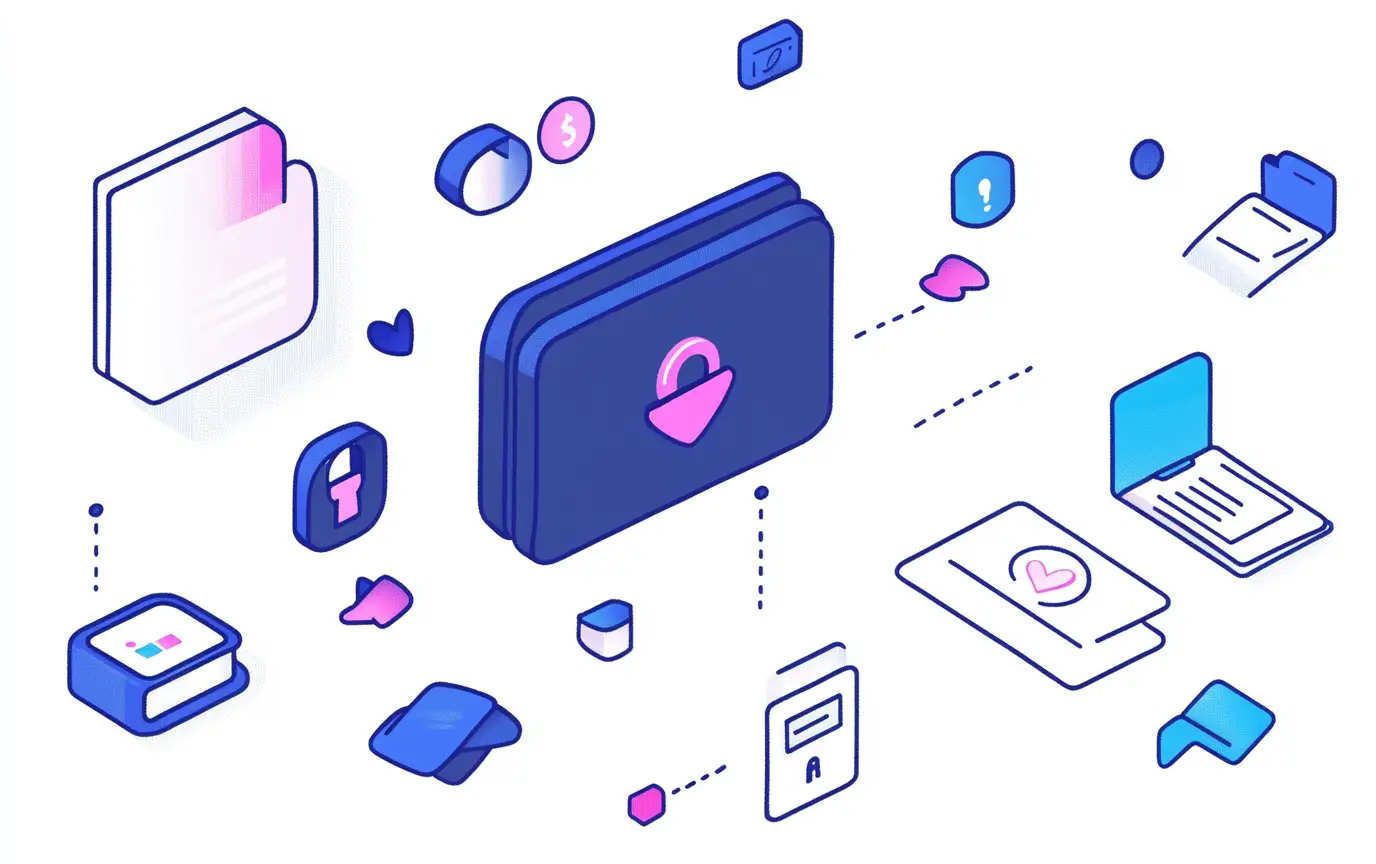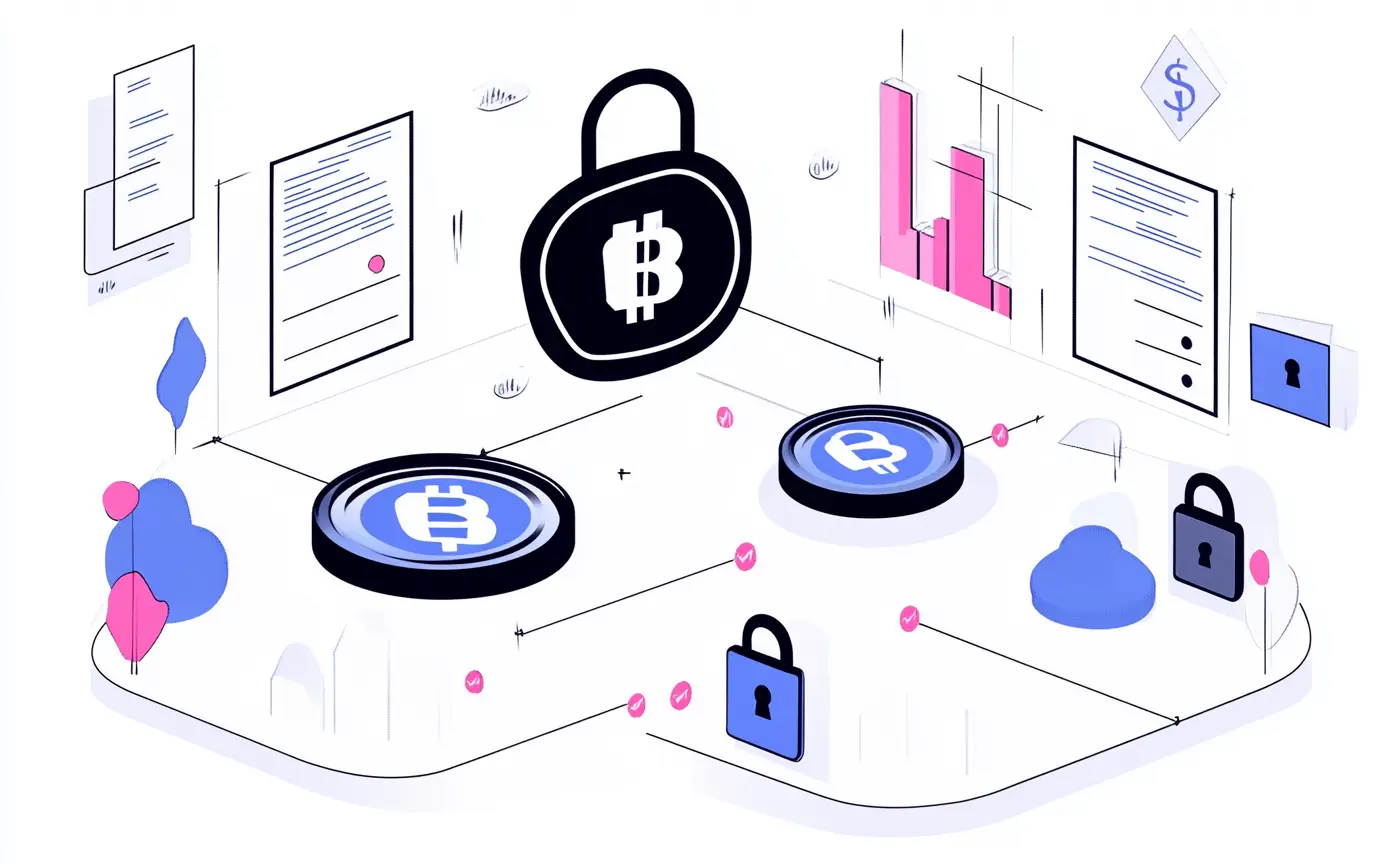Choosing a hardware wallet: features, brands, and security
In the digital age, safeguarding your cryptocurrencies is not just wise; it is essential. The allure of cryptocurrencies brings opportunities, yet it also attracts dangers. Many novices dive headfirst into this vibrant ocean, often overlooking the critical need for security. Among various protection methods, using a hardware wallet reigns supreme. These devices are not just tools; they represent a fortress for your hard-earned assets. This guide delves into the intricacies of selecting a hardware wallet—its features, the leading brands, and key security aspects.
Why use a hardware wallet?
Picture this: you’ve spent hours, even days, educating yourself about cryptocurrencies. You’ve made your purchases, and your investments are starting to show promise. Suddenly, a chilling thought creeps in—what if you lose access to your coins? Hardware wallets, often dubbed “cold wallets,” store your private keys offline. This crucial trait forms the backbone of their security. When your private keys are offline, they stay protected from cyber threats like phishing, keyloggers, and malware.
Let’s break this down. Imagine you’re in a bustling marketplace, surrounded by potential thieves. You’d want to keep your valuables hidden, wouldn’t you? That’s the essence of a hardware wallet. By keeping your private keys away from the prying eyes of the internet, you create an impenetrable barrier for your assets.
Key security features of hardware wallets
Offline storage
The hallmark of a hardware wallet lies in its offline storage capabilities. By safeguarding your private keys away from the online realm, these devices fortify your cryptocurrencies against various internet-based attacks. This level of protection is paramount, especially for those who hold significant amounts of digital currency. It’s akin to storing your cash in a safe rather than in your pocket—less accessible to opportunistic thieves.
Consider a story shared by a friend, Mark. After losing access to his online wallet due to a phishing scam, he turned to a hardware wallet. “It felt like having a safe deposit box,” he reflected, a hint of relief in his voice. For Mark, offline storage was not just a feature; it was his security blanket.
Encrypted PINs
Imagine your hardware wallet as a treasure chest, locked tight. Accessing it requires an encrypted PIN code, ensuring that even if the device is lost or stolen, your assets remain inaccessible. This additional layer of security solidifies your confidence in the device. Each time you enter your PIN, you’re reminded that your assets are closely guarded.
Take a moment to reflect on this—what if someone found your wallet? Would they have free rein over your investments? Not with a hardware wallet. The encrypted PIN acts as a formidable lock, turning what could be a disaster into a mere inconvenience.
Recovery phrases
Life is unpredictable. Devices may fail, get lost, or suffer damage. In these moments of uncertainty, recovery phrases come into play. A recovery phrase, typically consisting of 12 to 24 words, allows you to regain access to your assets. However, this phrase is not to be taken lightly. Store it securely and offline, shielded from potential threats.
Imagine Sarah, who accidentally left her wallet on a train. Her heart raced as she thought of her investments. Fortunately, she had secured her recovery phrase in a fireproof safe at home. “I could breathe again,” she shared, visibly relaxed. This phrase, more than a mere security measure, became her lifeline.
Firmware validation
In a world where threats evolve rapidly, hardware wallets implement firmware validation. This process ensures that the device’s firmware is genuine and untampered with. Every time you power on your wallet, it verifies the authenticity of its software. This step is crucial in preventing supply-chain attacks and “evil maid” scenarios, where an attacker could install malicious software while the device is unattended.
Think of this as a bouncer at an exclusive club—only those who pass the security check gain entry. By validating firmware, hardware wallets maintain the integrity of your investment, giving you peace of mind as you conduct transactions.
Top brands and models of hardware wallets
The market is bustling with hardware wallets, each boasting unique features and advantages. Here, we explore some of the top contenders, helping you make an informed choice.
1. Trezor Safe 3
Best for security-conscious users, the Trezor Safe 3 supports over 8,000 crypto assets. With features like a secure element, two-factor authentication, and a touchscreen interface, it combines security with user-friendliness. At a price of $79, it integrates seamlessly with software like Trezor Suite, Metamask, and Exodus, making it a solid choice for both novices and seasoned investors.
2. Ledger Flex
The Ledger Flex is ideal for those seeking overall security and ease of use. This wallet features a secure element chip (CC EAL6+), two-factor authentication, and a 2.84-inch greyscale E Ink touchscreen. Priced at $249, it supports over 5,500 assets and offers Bluetooth connectivity for added convenience. Its user-friendly design simplifies transactions, making it a popular option among crypto enthusiasts.
3. NGRAVE Zero
For maximum security, look no further than the NGRAVE Zero. With EAL7 certification and an air-gapped, tamper-proof design, this wallet prioritises the safety of your assets. Its impressive 200-year battery life means you won’t have to worry about constant charging. Priced at $398, it’s designed for those who refuse to compromise on security.
4. Cypherock
Cypherock caters to those focused on backup and recovery. Its Shamir’s Secret Sharing technology, combined with a card-based system, allows users to manage multiple wallets with ease. Priced at $159, it offers a unique approach to wallet management, ensuring your assets are always within reach and safeguarded.
5. ELLIPAL Titan
The ELLIPAL Titan is perfect for users interested in DApps and DeFi platforms. This fully air-gapped wallet features anti-tamper technology and QR code-only access, supporting over 10,000 assets. Priced at $169, it’s designed to offer comprehensive support for decentralised finance, making it an appealing option for modern investors.
6. BitBox02 Multi Edition
Best for versatile portfolios, the BitBox02 Multi Edition supports multiple cryptocurrencies, including Bitcoin, Ethereum, and more. Its secure chip and USB-C interface enhance usability, while its open-source software provides transparency. At approximately €149, it’s a well-rounded solution for those with diverse portfolios.
7. SafePal S1
For those seeking an affordable and user-friendly option, the SafePal S1 stands out. Priced at $49.99, this wallet features a built-in camera for QR code scanning and supports over 30,000 assets. Its physical buttons and mobile app integration make it intuitive to use, making it an excellent choice for newcomers to the cryptocurrency landscape.
How to choose the right hardware wallet
Selecting a hardware wallet requires careful consideration of various factors. Here are key aspects to keep in mind as you navigate your options.
Coin support
First and foremost, ensure the wallet supports the cryptocurrencies you wish to store. Some wallets, such as the Trezor Safe 3 and Ledger Flex, accommodate thousands of assets, providing versatility for your investment strategy. Review your portfolio and match it with the wallet’s supported coins.
Security features
Prioritise security by looking for advanced features. Secure element chips, two-factor authentication, and air-gapped systems are essential. The NGRAVE Zero epitomises top-tier security with its EAL7 certification and tamper-proof design. When it comes to your investments, never underestimate the importance of these features.
User-friendly design
Ease of use should not be overlooked. A user-friendly interface enhances your experience, making transactions smoother. The Ledger Flex and Trezor Safe 3 both offer touchscreens, while the SafePal S1 shines with its built-in camera for QR code scans. A wallet that feels intuitive will save you time and frustration.
Price
Hardware wallets come in a range of prices. While the SafePal S1 is an economical choice at $49.99, the NGRAVE Zero’s premium price tag of $398 reflects its superior security features. Determine your budget and balance it against the features that matter most to you.
Additional features
Some wallets provide unique functionalities, such as mobile app integration, Bluetooth connectivity, and DApp support. The ELLIPAL Titan, for instance, is tailored for secure access to decentralised applications. Consider what extra features align with your investment strategy and lifestyle.
As you weigh your options, remember that choosing the right hardware wallet is a pivotal decision in securing your cryptocurrencies. Understanding the essential features, evaluating top brands, and considering your specific needs will guide you in making an informed choice. The world of cryptocurrency is vast, and with the right wallet, you can navigate it with confidence.
Best practices for securing your hardware wallet
As you embark on your journey into the world of cryptocurrency, understanding how to secure your hardware wallet is vital. Owning a wallet is just the beginning. The way you use and protect it will determine the safety of your digital assets. Here are essential practices to keep in mind.
Always buy from official sources
The first rule of thumb when purchasing a hardware wallet is to buy directly from the manufacturer or authorised resellers. This step greatly reduces the risk of supply-chain attacks—where malicious software could be installed on a device before it reaches you. When a wallet is compromised at the source, it undermines the very purpose of using a hardware wallet in the first place.
Consider this: you wouldn’t buy a luxury watch from an unknown seller on the street. Similarly, treat your hardware wallet purchase with the same level of caution. Stick to reputable sources, and you’ll significantly lower your chances of falling victim to scams.
Store recovery phrases securely
Your recovery phrase is your key to your cryptocurrency kingdom. Losing it could mean losing access to your funds forever. Therefore, it’s crucial to store this phrase in a secure location. Avoid digital storage options that could be hacked. Instead, opt for physical storage methods. Write it down and keep it in a safe, fireproof place, or consider using a safety deposit box.
This is akin to placing your house keys in a secure drawer rather than leaving them under the doormat. By taking your recovery phrase seriously, you safeguard your financial freedom.
Regularly update firmware
The digital landscape is ever-changing, and hackers constantly evolve their methods. To stay one step ahead, ensure your hardware wallet’s firmware is up-to-date. Manufacturers periodically release updates to patch vulnerabilities and introduce new features. Ignoring these updates can leave your assets exposed.
Think of firmware updates like routine maintenance on your car. You wouldn’t ignore the oil change notification, would you? Similarly, keep your hardware wallet updated to ensure optimal performance and security.
Common misconceptions about hardware wallets
While hardware wallets provide robust security, several misconceptions surround their use. It’s essential to distinguish fact from fiction to understand their true value.
Hardware wallets are infallible
One common myth is that hardware wallets are impervious to all threats. While they offer significant protection against online attacks, they are not immune to human error. For example, if you expose your recovery phrase or fall for a phishing scam, your assets remain vulnerable. Always apply due diligence and vigilance when using your wallet.
You don’t need to back up your wallet
Another misconception is that hardware wallets eliminate the need for backups. In reality, a hardware wallet is merely a tool for managing your assets. It does not replace the necessity of having a backup plan. Always ensure you have recorded your recovery phrase and any additional security measures provided by the wallet.
They are too complicated for newcomers
Some individuals hesitate to adopt hardware wallets due to the belief that they are too complex. While there may be a learning curve, most wallets are designed with user-friendliness in mind. With a bit of research and practice, you’ll find that navigating a hardware wallet becomes second nature. Tutorials and guides are widely available, making it easier than ever for newcomers to get started.
Advanced features to consider
As you delve deeper into the realm of hardware wallets, you may encounter advanced features that enhance usability and security. Understanding these can further assist you in making the best choice for your needs.
Multisignature support
Multisignature wallets require multiple private keys to authorise a transaction. This feature adds an additional layer of security. For example, if you have a joint investment with a partner, multisig wallets ensure that both signatures are needed to move the funds. This reduces the risk of unauthorised access, as a single compromised key won’t suffice.
Bitcoin-only wallets
For those who are exclusively invested in Bitcoin, consider using a Bitcoin-only wallet. These wallets are tailored specifically for Bitcoin transactions, often featuring enhanced security measures. While many hardware wallets support a wide range of cryptocurrencies, a Bitcoin-only wallet can streamline your experience, reducing complexity.
Mobile wallet integration
Some hardware wallets offer mobile wallet integration, allowing you to connect your wallet to a smartphone app. This feature enhances convenience, as you can easily manage transactions on the go. However, tread carefully—ensure the mobile app itself possesses robust security features to protect your assets.
Final thoughts on choosing and using hardware wallets
The decision to invest in a hardware wallet marks a pivotal moment in securing your cryptocurrency assets. As you navigate the complexities of this digital landscape, keep your goals in mind. Whether you prioritise security, functionality, or user experience, there is a hardware wallet tailored to your needs.
Investing in cryptocurrencies is exhilarating, yet it comes with inherent risks. By choosing the right hardware wallet and adhering to best practices, you can fortify your defences against potential threats.
While the excitement of trading and investing is palpable, never lose sight of the importance of security. A hardware wallet is more than just a device; it’s a vital safeguard for your future. Treat it with the respect it deserves, and you’ll reap the rewards of your investments for years to come.
Staying informed and engaged
As you continue your cryptocurrency journey, staying informed is crucial. Join online discussions, subscribe to relevant publications, and engage with the community. Knowledge is power, and being proactive in your education will ultimately lead to better decision-making.
Lastly, consider the evolving nature of technology. Hardware wallets may continue to change, introducing new features and security measures. Embrace these developments as they arise, ensuring that you remain at the forefront of cryptocurrency security.
In conclusion, your choice in a hardware wallet is foundational to your cryptocurrency strategy. By understanding the features, evaluating brands, and observing best practices, you position yourself for success in this dynamic market.
Remember, your assets are a reflection of your dedication and foresight. Guard them wisely, and they will serve you well in your pursuit of financial independence.
Want to know when and how to start trading? Subscribe to our Telegram channel: https://t.me/volitybeat or access the financial markets directly, risk-free at https://volity.io/.





